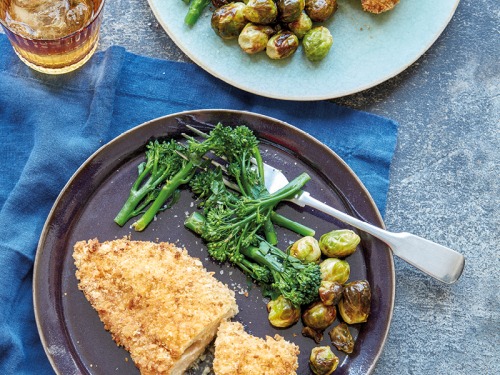The Best Gardens to Visit in the North East

We've scoured the region to bring you the greatest gardens in the game
Birkheads Secret Gardens
Sunniside, Gateshead NE16 5EL
07778 447920
birkheadssecretgarden.co.uk
Situated in rural Gateshead, this beautiful garden is an RHS Partner garden and is truly spectacular when in full bloom, aiming to inspire green-fingered visitors with its wide variety of hardy plants. Owners Christine and Mike Liddle have created a series of 14 gardens within the the three-acre hillside plot to suit to bring colour and scent to every corner.
Tip for your trip: Enjoy a bite to eat and a drink on the coffee shop’s terrace and look out for Birkheads’ abundant wildlife – the garden’s boundary hedges provide the perfect habitat to attract hedgehogs, stoats and field mice, whilst the wide range of flowering plants produce nectar and pollen for over 10 varieties of butterflies and the garden’s own hive of honey bees.
Cherryburn
Station Bank, Mickley Square, Stocksfield NE43 7DD
01661 843276
nationaltrust.org.uk
Cherryburn was the birthplace and childhood home of the famed naturalist and illustrator Thomas Bewick. Open on Thursdays and Fridays from March through to the start of November, the garden here has recently been renovated to make it easier to explore, with additional seating and paths that are accessible for wheelchairs and pushchairs. The garden has also been replanted to create a wilder feel, using plants selected according to whether they would have been familiar to Bewick or will encourage the wildlife that he dedicated his life to. The regeneration of the garden at Cherryburn is an ongoing project, and we can’t wait to see how it evolves over the years to come.
Tip for your trip: Make sure to stop by the print room for demonstrations of Bewick’s signature wood block printing technique.
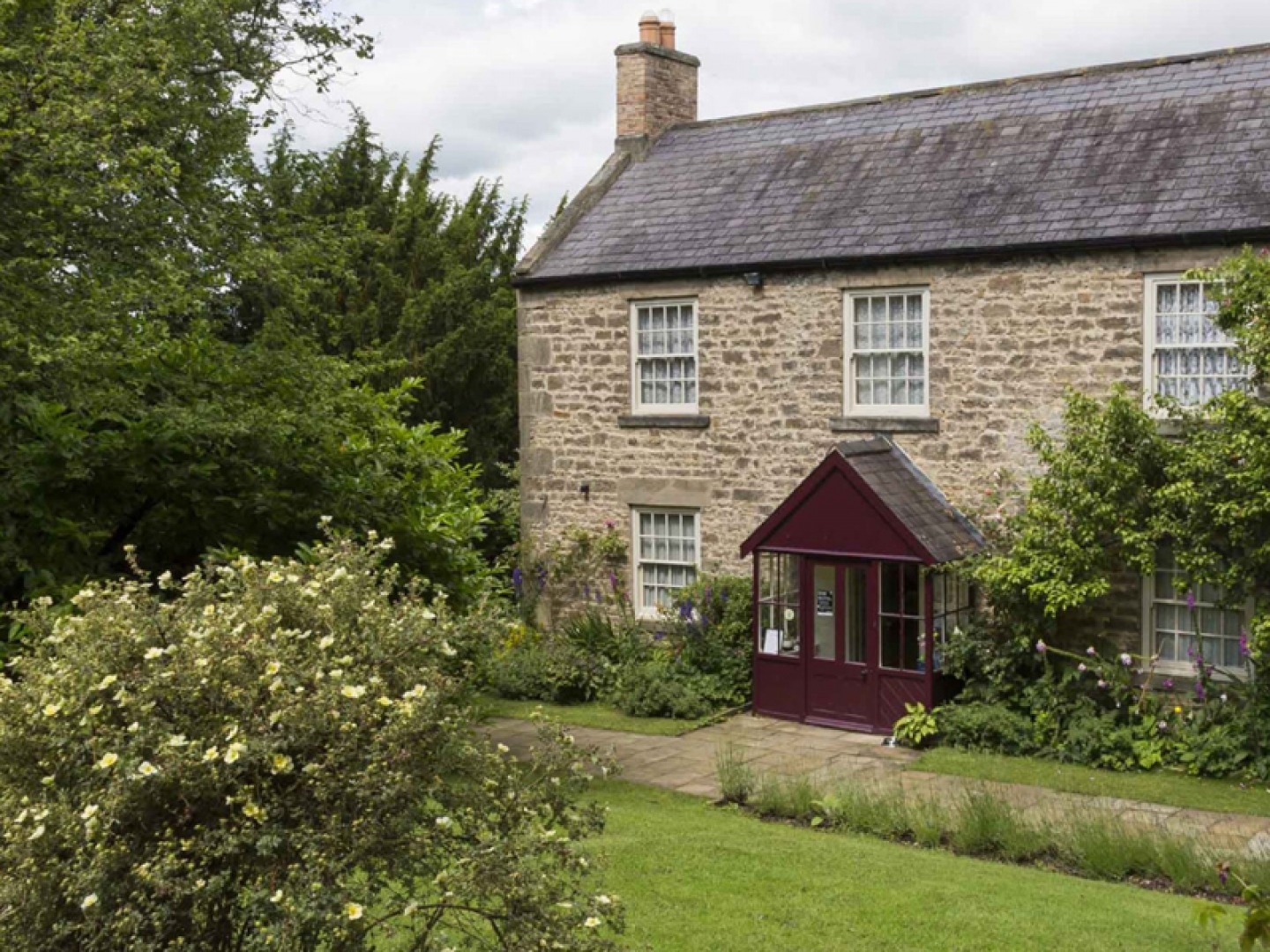
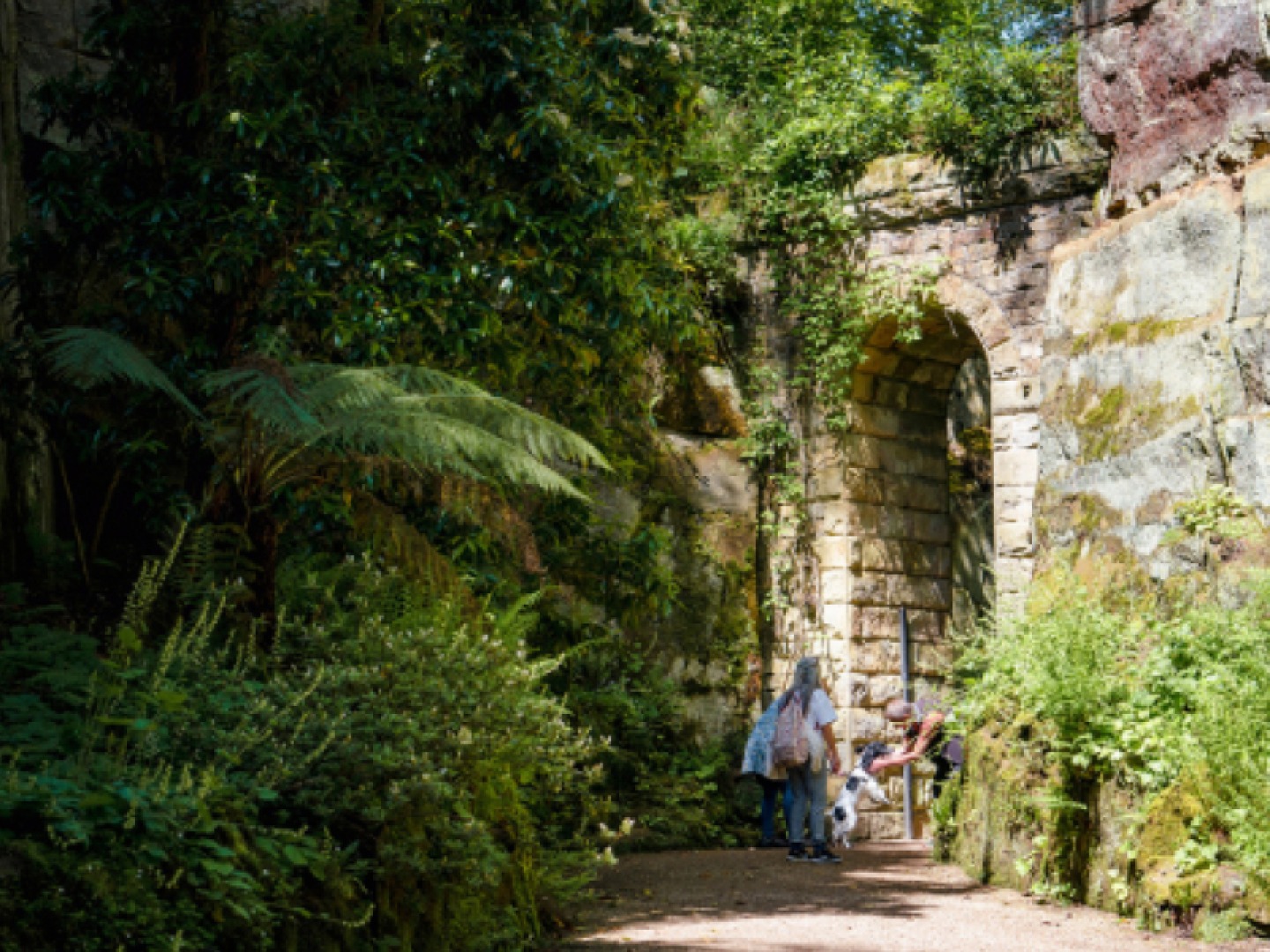
Belsay Hall, Castle and Gardens
Belsay, Northumberland NE20 0DX
01661 881636
english-heritage.org.uk
As well as its grand hall, Belsay has 30 acres of gardens for visitors to explore. Take a stroll through the deep ravines cut into ancient rock which lead to the Jurassic-style Quarry Garden, planted with exotic trees and shrubs. Throughout spring, Belsay’s stunning Rhododendron Garden will be in flower, whilst the formal Yew Garden and Magnolia Terrace are well worth a visit – look out for the charming blue spring flowers of the chionodoxa sardensis on the terrace. During the summer months, the unusual Voodoo Lily is in flower, growing up to two metres in height.
Tip for your trip: Wander along the beautiful Crag Wood Walk to work up an appetite before visiting Belsay’s Victorian tearoom.
The Alnwick Garden
Denwick Lane, Alnwick NE66 1YU
01665 511350
alnwickgarden.com
Set in 12 acres of magnificent, meandering grounds, the award winning Alnwick Garden is one of the most iconic gardens in the North East. Visit their rose garden in all its glory during the summer months, with 300 highly-scented roses to observe in fascinating varieties, whilst the walled Ornamental Garden is a formal gardener’s paradise. For those who are feeling brave, a guided tour of their infamous Poison Garden offers a fascinating insight into the potent potential of plants including a recent addition, the Australian ‘Gympie Gympie’, a plant that is so venomous it must be kept locked in a glass cabinet at all times.
Tip for your trip: If you’re bringing little ones with you it’s worth packing a spare change of clothes, there’s plenty of opportunity to get splashed by the garden’s iconic water features.

Sunderland Museum and Winter Gardens
Burdon Road, Sunderland SR1 1PP
0191 561 2323
sunderlandculture.org.uk
After being destroyed during the Second World War, Sunderland’s Winter Gardens were finally restored to their full glory in 2001. The gardens have transformed the ground floor of Sunderland Museum into a tropical paradise, with more than 2,000 plants plant species originating from different climates around the world thriving under its glass roof. Best of all, this covered garden can be enjoyed in all seasons, whatever the weather.
Tip for your trip: From the tree-top walkway you can enjoy a bird’s eye view over Mowbray Park, before heading back down to ground level to discover the Winter Gardens’ water features and fish ponds.
Bide-A-Wee Cottage Garden
Stanton, Netherwitton, Morpeth NE65 8PR
01670 772004
bideaweek.co.uk
Escape the hustle and bustle of daily life in this idyllic cottage garden, open from April to August. Fusing formal and informal styles, Bide-A-Wee’s garden is a plant-lover’s paradise growing a huge variety of perennials, shrubs, grasses and ferns. It has been carefully designed and lovingly maintained by Mark Robson, whose years of hard work have transformed the old quarry site (which was the garden’s foundation) by using it to provide a variety of platforms for his imaginative planting. With the Bide-A-Wee’s nursery located at the entrance to the garden, you can get advice from gardeners and take part of this horticultural oasis home with you.
Tip for your trip: Take the opportunity to see Bide-A-Wee’s National Collection of Centaura, holding over 90 species and cultivars, the majority of which are integrated throughout the garden.
Crook Hall Gardens
Frankland Lane, Sidegate, Durham DH1 5SZ
0191 383 1832
nationaltrust.org.uk
Crook Hall’s gardens are divided up into individual areas, each with its own history and identity. Whilst some of the gardens – such as the Georgian walled garden – were originally planted in the 1700s (and visited by William Wordsworth and John Ruskin), other areas including a maze of cotoneaster and hornbeam hedges, are relatively new additions. Explore the Secret Walled Garden with its large magnolia and gingko biloba, discover plants that grew during the Bard’s lifetime in the Shakespeare Garden, marvel at the floral displays in the Silver and White Garden or spot wildlife in their moat pool. Crook Hall offers all this and more within walking distance of Durham city centre.
Tip for your trip: If the weather is nice, make a pitstop at their second-hand bookshop. Sometimes there’s no better combination than a quiet garden bench and a good book, especially when all proceeds go towards caring for the garden.
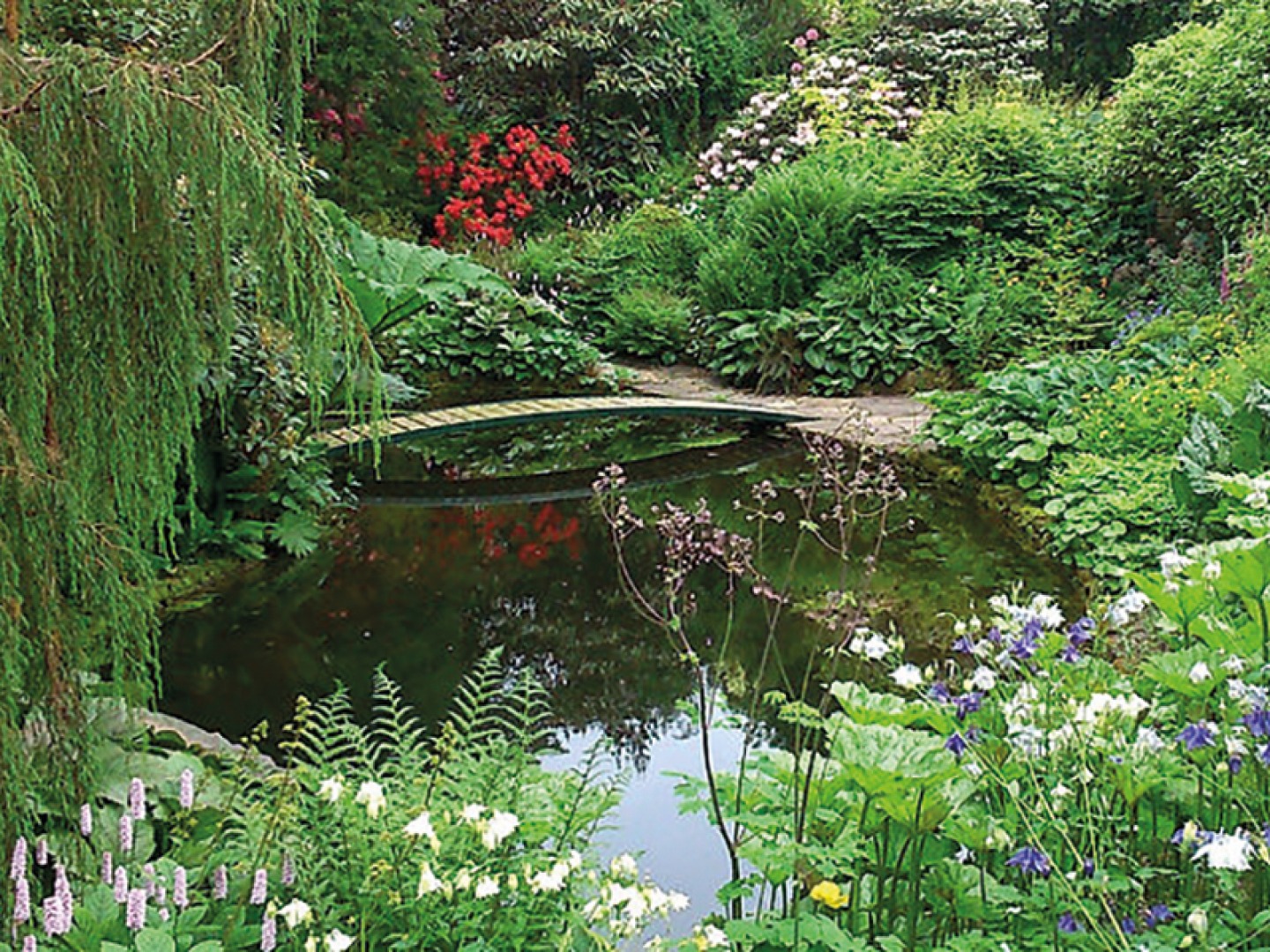

Durham University Botanic Garden
Hollingside Lane, South Road, Durham DH1 3TN
0191 334 2887
durham.ac.uk
Set among beautiful woodlands to the south of Durham city, this 10-hectare botanic garden is both a research resource and a public attraction, with a wide variety of landscapes and plants to discover. Open all year round, the garden includes an Alpine Garden, Woodland Garden and Bamboo Grove, and there are always seasonal changes to discover in each individual area. The glasshouses are particularly intriguing and are home to tropical creepy crawlies as well as plants. The Tropical House recreates a humid rainforest climate where bananas, sugarcane, coffee, giant bamboo and epiphytic orchids thrive, while the Cactus House is home to desert plants such as prickly pears and aloes.
Tip for your trip: Stroll along the woodland trail to the Wildflower Meadow, a biologically-diverse garden which attracts an abundance of wildlife, from kestrels to butterflies.
Chillingham Castle
Chillingham, Alnwick NE66 5NJ
01668 215359
chillingham-castle.com
Chillingham Castle opens its Formal Gardens to visitors from the end of March to the start of November. The gardens are home to the longest herbaceous border in Northern England and are the work of royal designer Sir Jeffry Wyattville, who worked at Windsor Castle before applying his expertise to Chillingham. Take a stroll down to Chillingham’s two lakes (fed by 12 springs and streams) which are surrounded by beautiful willow, alder, birch trees and native grasses or explore the grounds further on an idyllic Woodland Walk where you can see a range of significant tree varieties.
Tip for your trip: On your way around Chillingham’s grounds be sure to keep your eyes peeled for the castle’s famous herd of Wild Cattle, the woodland’s red squirrel population and the park’s resident deer.
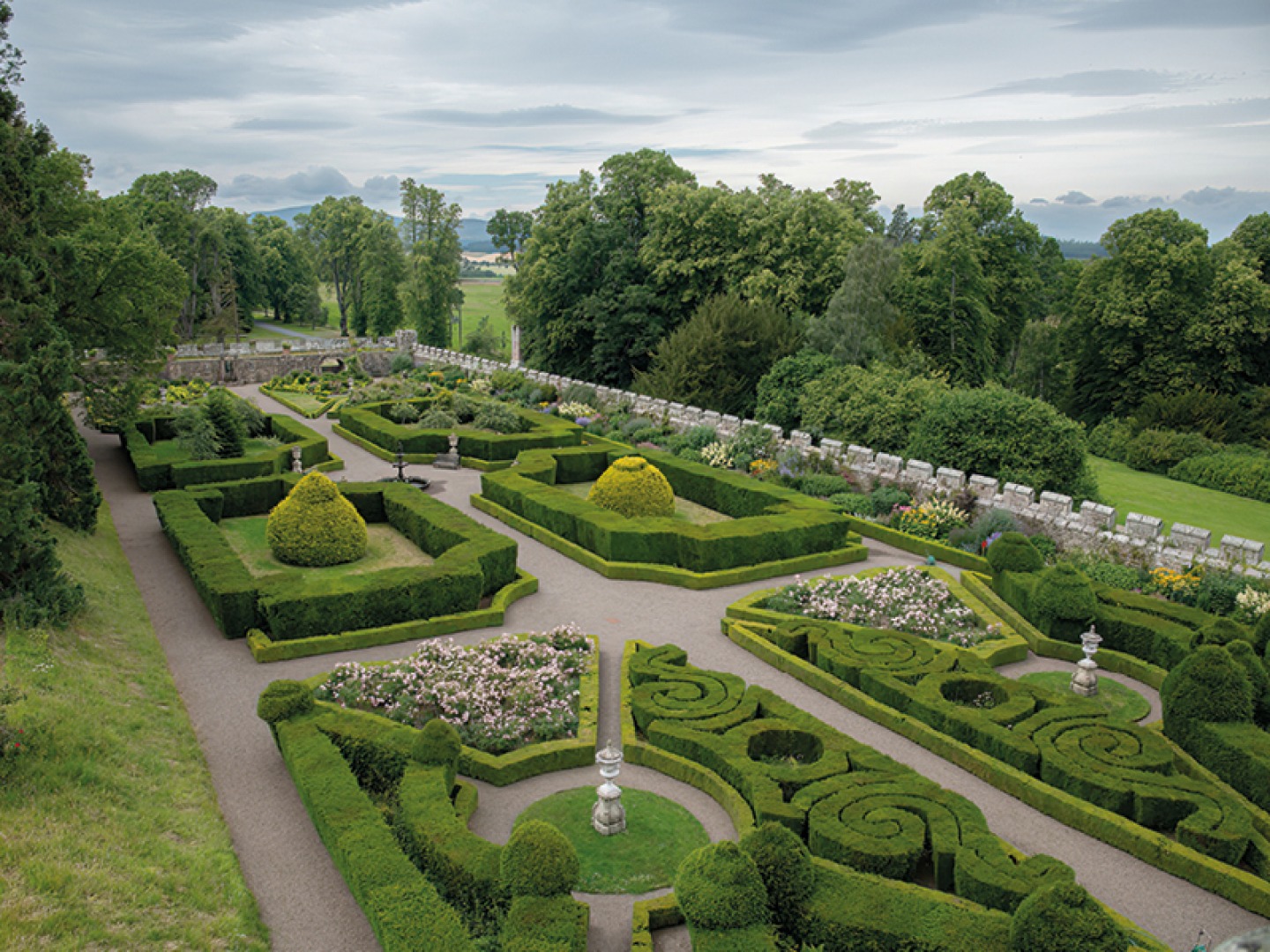
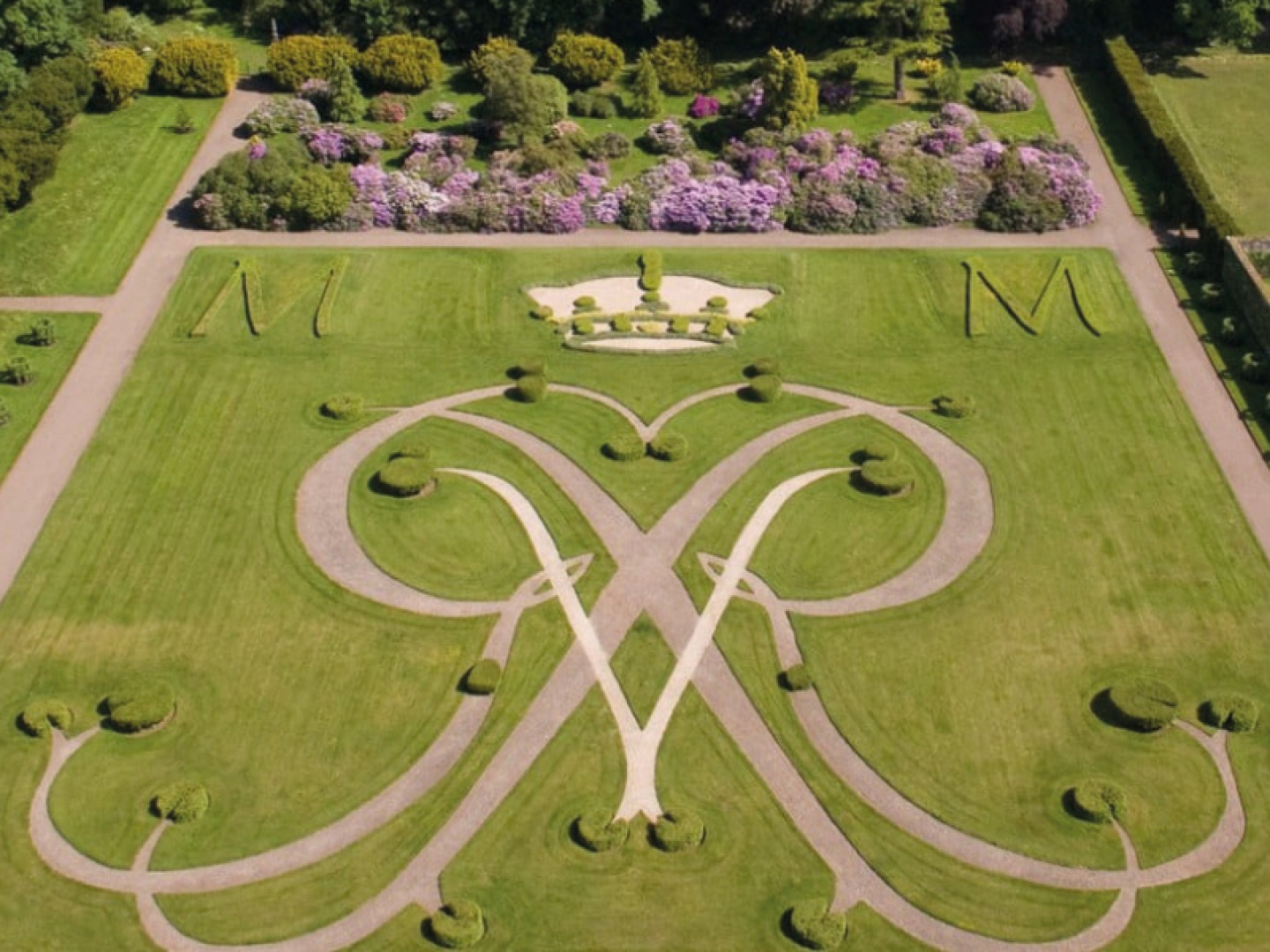
Floors Castle
Kelso, Roxburghshire TD5 7SF
01573 223333
floorscastle.com
Scotland’s largest inhabited castle is set with stunning grounds and idyllic gardens and, having been closed for the winter, will be ready to wow the public again this spring. The castle has a long history, but one of its most recent additions is the Millennium Garden, a impressive formal garden with a French-style parterre revealing the initials of the 10th Duke and Duchess when viewed from above. Be sure to visit the beautiful Star Plantation to experience the variety of hardwood trees, woodland shrubs and open glades. Floors’ four-acre Walled Garden is home to herbaceous borders, which are packed with vibrant blooms throughout spring and summer, and impressive glasshouses which cultivate fresh fruit and vines.
Tip for your trip: Younger members of the family will be glad to hear that, as well as growing seasonal produce for the Castle’s two cafés, the Walled Garden is also home to a thrilling playground which includes monkey bars, a flying fox, and swings.

Cragside
Rothbury NE65 7PX
01669 620333
nationaltrust.org.uk
Once home to engineer Lord Armstrong, Cragside boasts one of the largest rock gardens in Europe, with specimens of heath and heather, evergreen and deciduous shrubs and bright azaleas. Completely man-made, the Rock Garden slopes all the way down from the house to Debdon Burn and the Pinetum – an arboretum which holds a collection of North American conifers, many of which were originally planted by Lord and Lady Armstrong around 140 years ago. The three-acre garden is also home to The Orchard House – one of the largest surviving glasshouses dating from the 1870s. The Italian Terrace, with its glass roof and sides, is the centrepiece of the Formal Garden’s lower level, while the carpet bedding display is a sight to behold in summer.
Tip for your trip: One of the best times of year to visit Cragside is rhododendron season, usually from the end of May to mid-June, when the estate is transformed by a sea of colour. This impressive show is complemented by bursts of azaleas around the grounds, which give off a beautiful scent and showcase vivid yellow and bright orange flowers.
Dilston Physic Garden
Corbridge NE45 5QZ
07879 533875
dilstonphysicgarden.com
Steeped in history and folklore, Dilston Physic Garden grow more than 800 medicinal plants, including their aromatic Chamomile Lawn, a Medicinal Meadow and a willow coppice. The natural design and sensory focus of this unique two-acre garden is said to be immediately soothing for visitors wandering along its winding paths. Learn about the power of plants and traditional medicine in the aromatic herb gardens, or unwind by the Tranquility Pool. Explore the natural labyrinth and discover hidden sculptures throughout Dilston’s gardens.
Tip for your trip: Once you have spent time learning about the healing power of plants in the garden, why not take some home with you in the form of the botanical teas sold in their shop? Their teas have been formulated to help with everything from sleep to inflammation and even memory.
Lindisfarne Castle
Holy Island TD15 2SH
01289 389244
nationaltrust.org.uk
Travel across the causeway to the spectacular Holy Island, home to Lindisfarne Castle which was converted by famed architect Sir Edwin Lutyens into a 20th-century private holiday home. In 1911 the small walled Gertrude Jekyll Garden was created on the site of an old vegetable patch and to this day the garden is a riot of colour in the summer months. The combination of hardy annuals, heritage vegetables and colourful perennials create a sensory oasis with eight varieties of sweet pea, tall crimson hollyhock, and an array of gladioli which are best seen in September.
Tip for your trip: Marvel at the spectacular coastal views from the garden, or on rainy days take shelter and explore the castle itself. Currently, visitors to the castle can enjoy Embodied Cacophonies, an immersive installation from artist and composer Liz Gre.
Howick Hall Gardens & Arboretum
Near Alnwick NE66 3LB
01665 577191
howickhallgardens.com
Howick Hall’s gardens were primarily created by the 5th Earl Grey, Charles, and his family to replace the formal Victorian planting of their ancestors with a more natural style of garden. Howick is perhaps best known for its beautiful spring bulbs, including various varieties of daffodils and some native fritillaries, as well as its Silverwood woodland garden which is home to an extensive collection of colourful rhododendron species. In summer, the south side of the Hall comes alive when the large herbaceous borders are in flower, bursting with geraniums, lupins and delphiniums. Be sure to visit the impressive Bog Garden around Howick’s pond during the summer months, featuring plants which have been grown from seeds collected on expeditions all over the world.
Tip for you trip: Don’t miss the Sensory Garden. This unique space was created in conjunction with the North Northumberland branch of the National Autistic Society to provide a safe and stimulating environment for children and adults with autism.
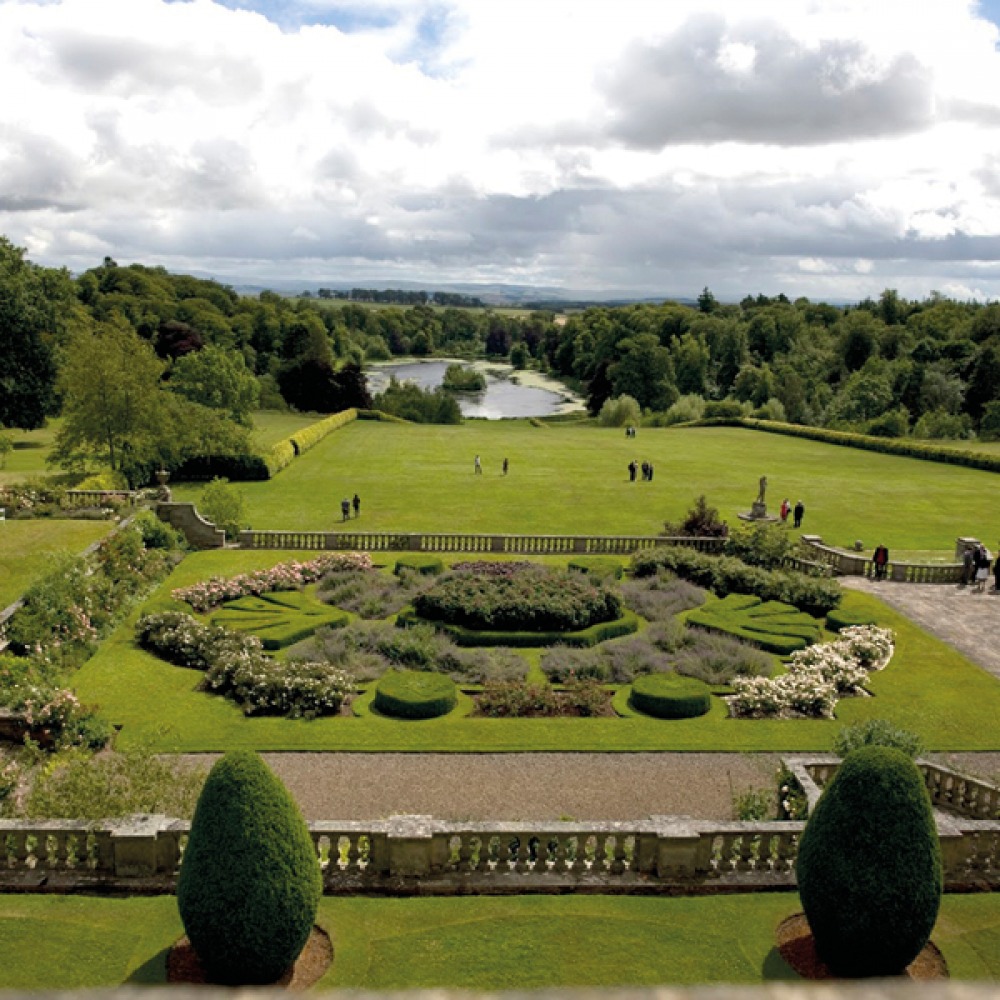
Longframlington Gardens
Longframlington, Morpeth NE65 8BE
01665 570382
longframlingtongardens.co.uk
Longframlington Gardens were first established in 1998, and now visitors can enjoy more than 1,000 varieties of trees, shrubs and perennials which are planted with the changing seasons in mind. With their quirky design, the gardens feature hardy ornamental trees, rock garden plants and original art installations. Visit the Wild Meadow areas to explore a natural landscape full of native wildlife. With 12 acres of nature trails, landscaped gardens and an arboretum, there is plenty to explore.
Tip for your trip: Head to Longframlington’s Nursery and Plant Centre and choose from the extensive range of plants for sale, which are sure to provide inspiration for your own garden.
Mellerstain House & Gardens
Gordon, Scottish Borders TD3 6LG
01573 410225
mellerstain.com
Mellerstain’s Italian-style Formal Gardens are now open all week, all year round to impress visitors with flowering plants and structured hedges. The house itself is set within 100 acres of mature parkland, ancient trees and a lake which have been maintained in their original 18th century layout. Explore the Italianate Terraces which are situated to the south of the house and boast views towards the Cheviot Hills. The terraces feature herbaceous borders and yew trees, descending down towards a sweeping lawn which extends to the lakeside.
Tip for your trip: Mellerstain’s grounds are full of hidden treasures around every corner which make it the perfect place to visit with children – in the north parkland look out for an enchanting little thatched cottage, and keep your eyes peeled for local wildlife on your way round the estate.
Monteviot House & Gardens
Monteviot House, Jedburgh TD8 6UH
01835 830380
monteviot.com
With 11 distinctively designed gardens to explore at Monteviot you’ll be able to make the most of your trip to the official home of the Marquis of Lothian. Monteviot’s most modern garden is the Garden of Persistent Imagination, which is intended to provide a peaceful space for contemplation. Wander through the Laburnum Tunnel and into the River Garden. Overlooking the River Teviot, this garden features a collection of bright herbaceous borders and a fusion of conventional and unusual planting. In June and July the Victorian walled Rose Garden is a spectacular sight with its selection of flowering varieties – the scents from this garden are sensational. Explore the Japanese-style Water Garden with curved bridges, impressive Himalayan poppies and golden flag lilies.
Tip for your trip: In Spring be sure to wander down the Sorbus Avenue, which is planted on one side with beautiful hydrangea paniculata, and on the other with a bed of weigela victoria and three prunus pissardii nigra trees. On the sloping grass bank, the spring fritillaries are a delight to see.
Washington Old Hall
The Avenue, Washington Village, Washington NE38 7LE
0191 418 6879
nationaltrust.org.uk
Washington Old Hall’s gardens provide visitors with a tranquil oasis, and the manor house itself was once home to the ancestors of the first president of the USA, George Washington. Each of Washington’s gardens is small and individual, and a real emphasis is placed on wildlife and nature conservation. Discover the garden’s 17th century parterre with its symmetrical topiary design, or wander through the orchard where a variety of English heritage apple trees have recently been planted.
Tip for your trip: A highlight of any visit to Washington is the nuttery – a wildflower nut orchard which is bustling with wildlife living in the variety of habitats it provides.
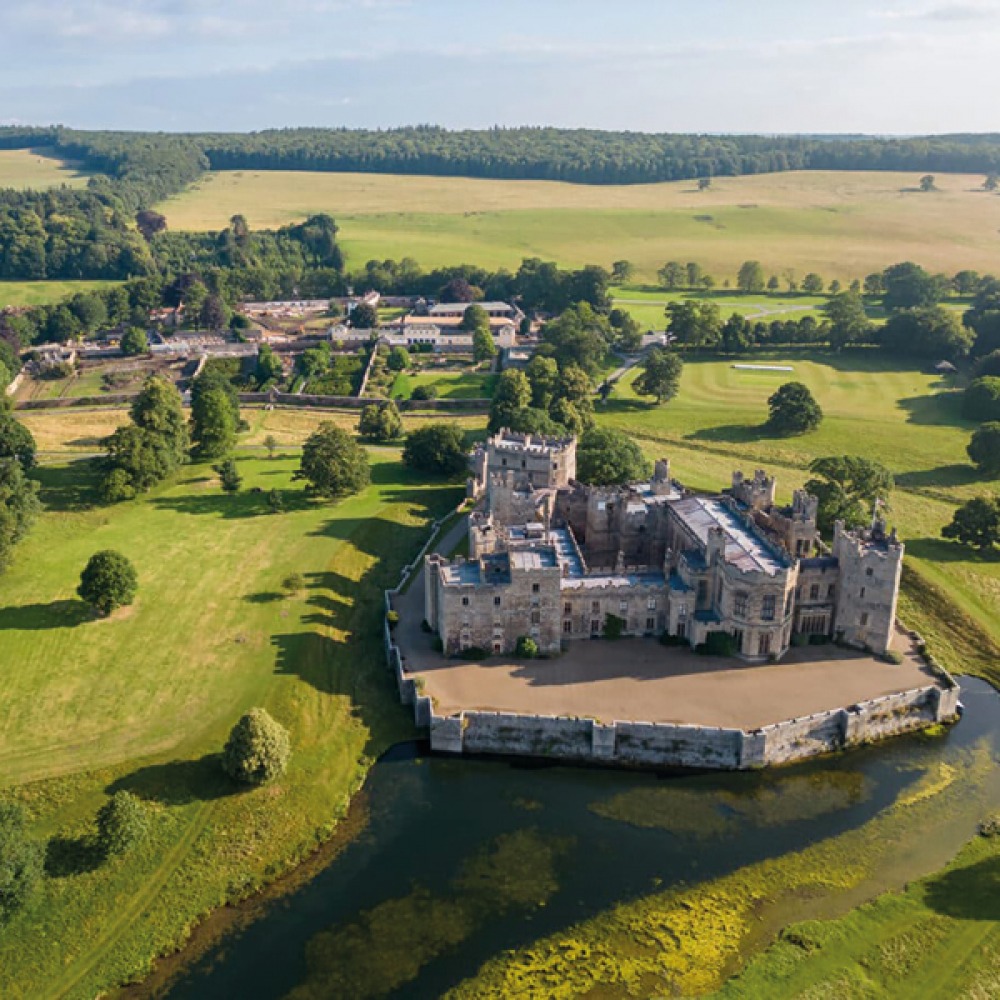
Raby Castle
Staindrop, Darlington DL2 3NF
01833 660207
raby.co.uk
With 200 acres of parkland, Raby is home to an abundance of wildlife, including herds of wild red and fallow deer. The five-acre Walled Garden at Raby has recently been remodelled by acclaimed garden designer Luciano Giubbilei with a design that builds on its iconic yew hedges and central pond. The remodel is part of a development called The Rising, which also encompasses extensive restoration of historic buildings on the estate, and will be opening to visitors in spring this year.
Tip for your trip: If they’re on a lead, four-legged friends can join you on your visit to Raby’s gardens and grounds as well as being welcome in the novel Yurt Café and The Stables Shop.
Wallington
Cambo, Northumberland NE61 4AR
01670 773606
nationaltrust.org.uk
This 13,000-acre estate was once home to MP Sir Charles Phillips Trevelyan and boasts beautiful gardens, lawns, lakes, woodland and parkland to explore. Nestled in the woods, Wallington’s secret Walled Garden is a must-visit. Walk through Neptune’s Gate, descend the sweeping stone staircase and enjoy the garden’s colourful borders and Edwardian conservatory. Take the chance to spot some fantastic wildlife along the picturesque River Walk or look out for red squirrels in the estate’s wildlife hide.The Dragon cycle trail has been designed with families in mind and is the perfect way to get out and about on the estate.
Tip for your trip: Take yourself for a stroll along the peaceful River Walk and look out for a contemporary sculpture depicting wolves by artists INSTAR, which was created as part of the National Trust’s ‘Trust New Art’ programme.







